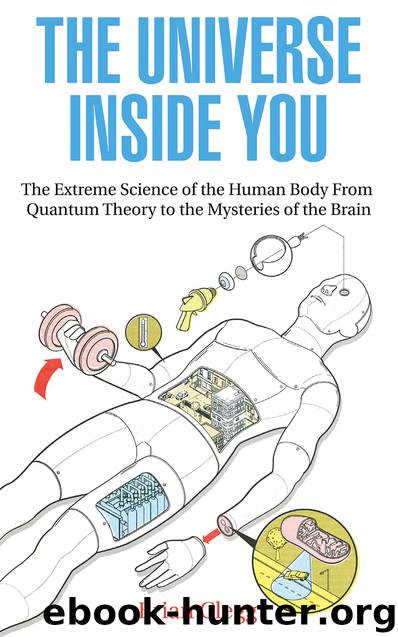The Universe Inside You by Brian Clegg

Author:Brian Clegg
Language: eng
Format: epub, mobi
Tags: science, human body, mitochondria, quantum theory
Publisher: Icon Books
Published: 2012-03-28T04:00:00+00:00
The winners’ drug
Another example of something we take for granted that has significant effects on the brain and body started out as a herbal treatment using the bark of willow trees and extracts of the plant meadowsweet (spiraea). These were used to treat headaches, fevers and inflammations as far back as 2000BC, when they are noted on a medical shopping list dating from the Sumerian Third Dynasty of Ur. They have been popular painkillers ever since.
In the eighteenth century, a misunderstanding resulted in willow bark becoming even more sought after. Peruvian bark or cinchona bark, the source of quinine, was already being used to treat the deadly disease malaria, but it was very expensive. The much cheaper willow bark was recommended as a substitute, but this was a case of confusion. All willow bark does is suppress the symptoms of malaria where cinchona has a more active effect. Still, this error was enough to ensure that willow bark went from strength to strength.
The only problem with the medication was that it played havoc with the stomach. The active ingredient, which we now know as salicylic acid, might have helped headaches and other pains and fevers to go away, but in exchange it disrupted the digestive processes, caused sharp pains in the stomach and could even cause dangerous stomach bleeding.
In 1899, German chemical company Bayer found a partial solution. A product derived from salicylic acid called acetylsalicylic acid had the same medical benefits but was kinder to the stomach. They called it ‘aspirin’ from a shortened version of the German name for the compound, acetylspirsäure. It became one of Bayer’s bestselling brands, alongside their popular cough-suppressant medicine, heroin! And that name ‘aspirin’ was copyright. Only Bayer could make it. Now, though, it’s a generic name in countries like the UK, oddly as a result of a treaty that ended a war.
This was the treaty of Versailles, signed on 28 June 1919. It detailed the reparations that Germany would be expected to pay in ending the First World War. Most of this treaty was the kind of thing you would expect: details of country boundaries, restrictions on military deployment and arms, financial payments and heavy industry provisions. But there, amongst those big concerns, was the right to use the name ‘aspirin’.
While in Germany (and 80 other countries around the world) aspirin is still a trademark of the Bayer company, in the UK and other signature countries the name can be used by anyone. It might seem crazy that such a minor right should be written into a major treaty, but both sides had been battered by the terrible Spanish flu pandemic towards the end of the war, and aspirin proved vital in reducing fevers. It was a real medical breakthrough.
Aspirin remained a hugely important drug for over 50 years. When I was a child it was still the only popular over-the-counter painkiller. But by the 1970s it was relegated to an also-ran by the more stomach-friendly paracetamol. This is called acetaminophen in the US, but better known by brand names like Panadol (Bayer’s product) and Tylenol.
Download
This site does not store any files on its server. We only index and link to content provided by other sites. Please contact the content providers to delete copyright contents if any and email us, we'll remove relevant links or contents immediately.
Sapiens: A Brief History of Humankind by Yuval Noah Harari(13053)
The Tidewater Tales by John Barth(12030)
Do No Harm Stories of Life, Death and Brain Surgery by Henry Marsh(6336)
Mastermind: How to Think Like Sherlock Holmes by Maria Konnikova(6236)
The Thirst by Nesbo Jo(5785)
Why We Sleep: Unlocking the Power of Sleep and Dreams by Matthew Walker(5642)
Sapiens by Yuval Noah Harari(4537)
Life 3.0: Being Human in the Age of Artificial Intelligence by Tegmark Max(4507)
The Longevity Diet by Valter Longo(4445)
The Rules Do Not Apply by Ariel Levy(3906)
The Immortal Life of Henrietta Lacks by Rebecca Skloot(3826)
The Body: A Guide for Occupants by Bill Bryson(3801)
Why We Sleep by Matthew Walker(3772)
Animal Frequency by Melissa Alvarez(3755)
Yoga Anatomy by Kaminoff Leslie(3701)
Barron's AP Biology by Goldberg M.S. Deborah T(3632)
The Hacking of the American Mind by Robert H. Lustig(3580)
All Creatures Great and Small by James Herriot(3516)
Yoga Anatomy by Leslie Kaminoff & Amy Matthews(3395)
